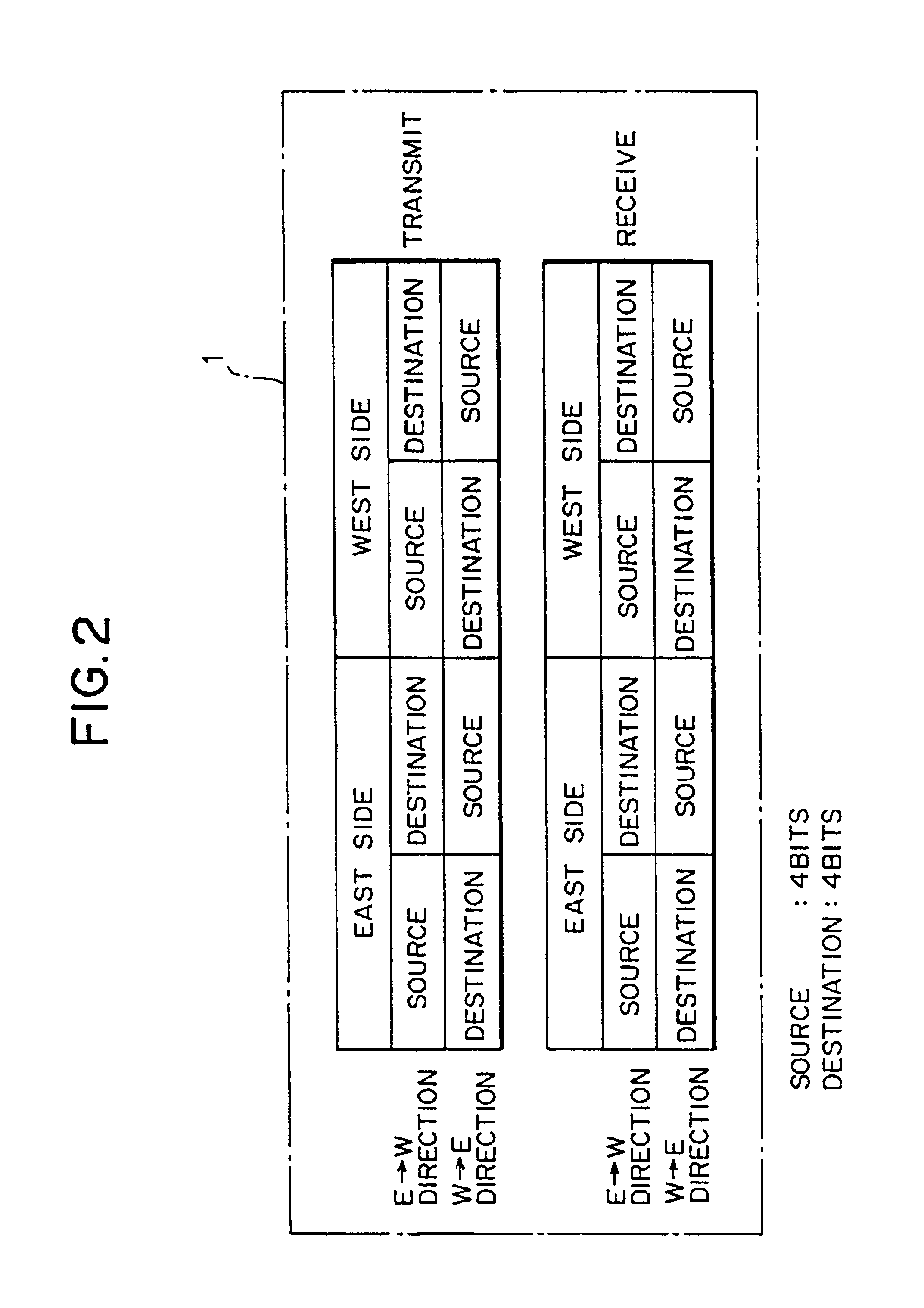Optical ring transmission system using squelch method
a transmission system and optical transmission technology, applied in the field of optical transmission apparatus and optical transmission method for ring transmission system, can solve the problems of inability to save optical signal, inability to perform squelching, and inability to connect, so as to achieve efficient information transmission, improve line utilization and line failure restoration rate, and reduce the effect of rip
- Summary
- Abstract
- Description
- Claims
- Application Information
AI Technical Summary
Benefits of technology
Problems solved by technology
Method used
Image
Examples
first embodiment
[0265](A) Description of the Invention
[0266]FIG. 1 is a schematic diagram of a ring transmission system according to a first embodiment of this invention. A ring transmission system 10 shown in FIG. 1 is configured with six optical transmitting apparatuses for a ring transmission system (hereinafter referred to merely as optical transmitting apparatuses, occasionally) 10a, 10b, 10c, 10d, 10e, and 10f connected to one another over a transmission path having a data link channel (data link) in which crossconnect information representing an add node identifier (add node ID) indicating a node to which an optical signal is added, and a drop node identifier (drop node ID) indicating a node from which the optical signal is dropped is written. The transmission path is an optical fiber, over which an optical signal is transmitted through the optical transmitting apparatuses 10a, 10b, 10c, 10d, 10e, and 10f over the optical fiber, and the optical transmitting apparatuses 10a, 10b, 10c, 10d, 10...
second embodiment
[0429](B) Description of the Invention
[0430]SONET system is standardized as one of so-called new synchronous networks in the North America, as stated above. An example of this network, 16 nodes (that are optical transmitting apparatuses referred to as stations, occasionally) are connected in ring to configure a transmission ring.
[0431]The transmission ring is classified into two-fiber BLSR in which nodes are connected by two optical fibers, and four-fiber-BLSR in which nodes are connected by four optical fibers. A bidirectional ring transmission path is formed with a pair or pairs of optical fibers. In the four-fiber BLSR, with two optical fibers as a pair, optical signals are transmitted clockwise over one pair of the optical fibers, while optical signals are transmitted counterclockwise over the other pair, similarly to the two-fiber BLSR.
[0432]In the transmission ring, 16 nodes, for example, are connected to one another over the bidirectional ring transmission path, optical signa...
PUM
 Login to View More
Login to View More Abstract
Description
Claims
Application Information
 Login to View More
Login to View More - R&D
- Intellectual Property
- Life Sciences
- Materials
- Tech Scout
- Unparalleled Data Quality
- Higher Quality Content
- 60% Fewer Hallucinations
Browse by: Latest US Patents, China's latest patents, Technical Efficacy Thesaurus, Application Domain, Technology Topic, Popular Technical Reports.
© 2025 PatSnap. All rights reserved.Legal|Privacy policy|Modern Slavery Act Transparency Statement|Sitemap|About US| Contact US: help@patsnap.com



